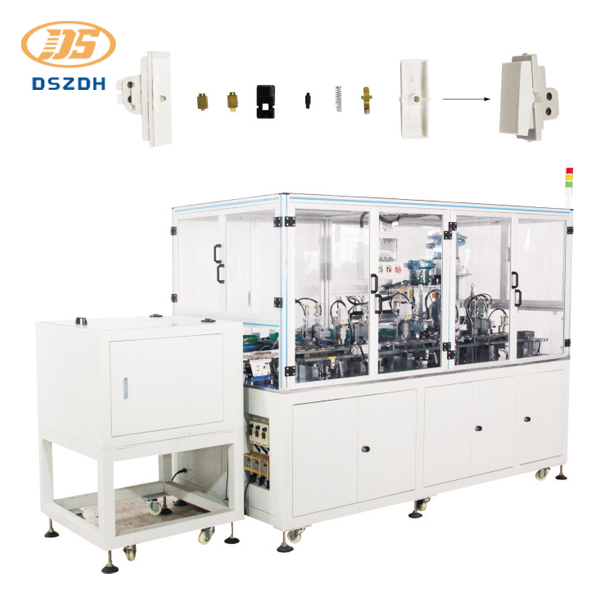- English
- 한국어
- Português
- русский
- Français
- 日本語
- Deutsch
- tiếng Việt
- Italiano
- Nederlands
- ภาษาไทย
- Polski
- Svenska
- magyar
- Malay
- বাংলা ভাষার
- Dansk
- Suomi
- हिन्दी
- Pilipino
- Türkçe
- Gaeilge
- العربية
- Indonesia
- Norsk
- تمل
- český
- ελληνικά
- український
- Javanese
- فارسی
- தமிழ்
- తెలుగు
- नेपाली
- Burmese
- български
- ລາວ
- Latine
- Қазақша
- Euskal
- Azərbaycan
- Slovenský jazyk
- Македонски
- Lietuvos
- Eesti Keel
- Română
- Slovenski
- मराठी
- Srpski језик
- Español
Basic Concepts of Automatic Assembly Machine
In today’s fast-paced manufacturing industry, Automatic Assembly Machines have become essential for improving efficiency, precision, and productivity. These machines streamline production by automating repetitive tasks, reducing human error, and ensuring consistent output. Whether you're in automotive, electronics, or consumer goods manufacturing, understanding the fundamentals of an Automatic Assembly Machine can help optimize your production line.
Key Features of Automatic Assembly Machines
Automatic Assembly Machines are designed to handle various assembly tasks with high speed and accuracy. Below are some of their core features:
-
High-Speed Operation – Capable of assembling hundreds or thousands of components per hour.
-
Precision Engineering – Ensures tight tolerances and consistent product quality.
-
Modular Design – Allows customization for different assembly requirements.
-
User-Friendly Interface – Simplifies operation and reduces training time.
-
Robust Construction – Built with durable materials for long-term reliability.
Technical Specifications
To better understand the capabilities of an Automatic Assembly Machine, here’s a breakdown of common parameters:
| Parameter | Specification |
|---|---|
| Assembly Speed | 50–1,200 parts per minute (PPM) |
| Positioning Accuracy | ±0.01–0.05 mm |
| Power Supply | 220V/380V, 50/60Hz |
| Control System | PLC or PC-based with HMI |
| Machine Weight | 500–5,000 kg (varies by model) |
| Operating Environment | 5–40°C, humidity <80% RH |
Applications of Automatic Assembly Machines
These machines are widely used across industries, including:
-
Automotive – Assembling engines, transmissions, and electronic components.
-
Electronics – PCB assembly, connector installation, and micro-component placement.
-
Medical Devices – Precision assembly of syringes, catheters, and surgical tools.
-
Consumer Goods – Packaging, fastener installation, and product assembly.
Advantages Over Manual Assembly
-
Higher Efficiency – Reduces cycle time and increases output.
-
Improved Consistency – Eliminates variations caused by human operators.
-
Cost Savings – Lowers labor costs and minimizes material waste.
-
Enhanced Safety – Reduces workplace injuries by handling hazardous tasks.
Conclusion
Investing in an Automatic Assembly Machine can significantly enhance your production capabilities while maintaining high-quality standards. With advanced features, customizable options, and industry-wide applications, these machines are a smart choice for modern manufacturing.
If you are very interested in our Zhejiang Desheng Intelligent Equipment Tech's products or have any questions, please feel free to contact us!






